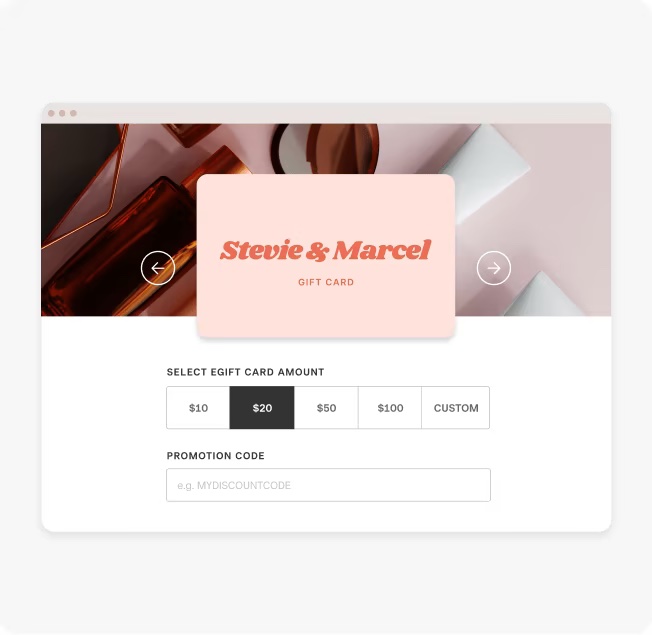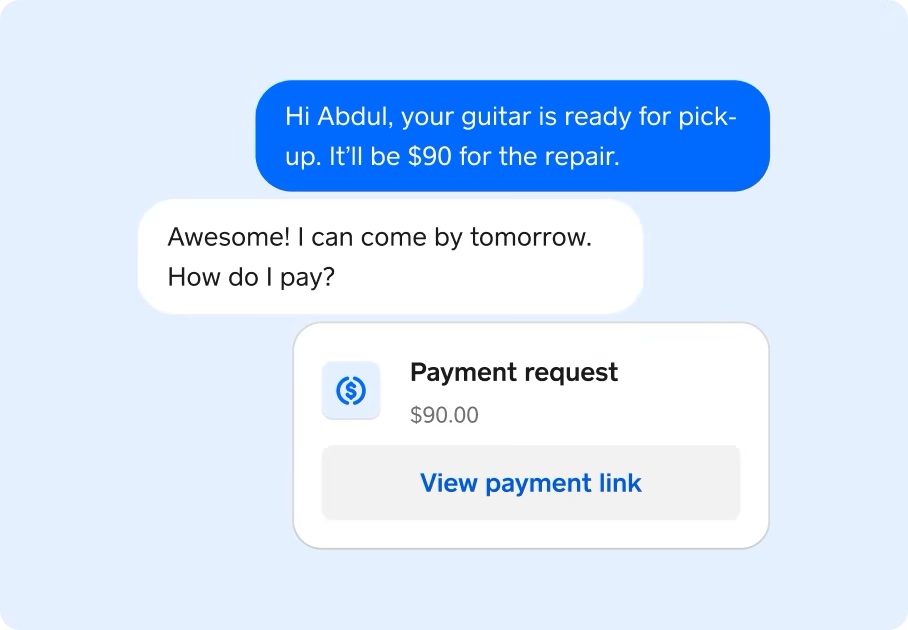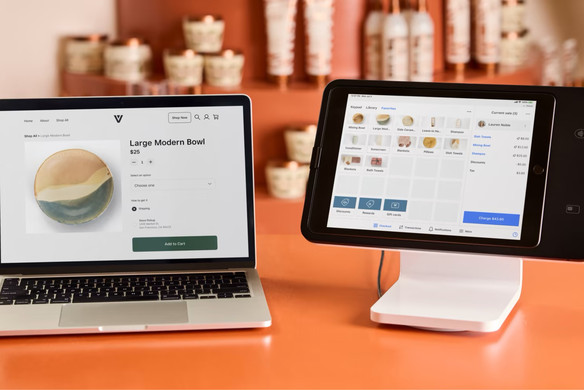Table of contents
Consumers are discovering products and making purchases across more platforms than ever, and they expect businesses to meet them there as they do. Providing a seamless sales experience across multiple channels is the new norm, and to stay competitive in 2024, businesses need to leverage omnichannel commerce strategies to keep customers engaged.
What is omnichannel commerce and why does it matter?
Omnichannel commerce is the method of using multiple sales channels to create a seamless customer experience. An omnichannel commerce approach helps businesses reach customers no matter where they shop — whether it’s in person, through an eCommerce store, on social media platforms, or through their mobile devices — and helps connect the dots to engage customers and drive purchasing decisions.
Omnichannel commerce tools enable businesses to keep up with consumer demand and give them an opportunity to raise their brand awareness across new platforms, to increase sales, and to drive repeat business.
5 omnichannel commerce strategies to grow your business
From reaching customers through multiple sales channels to creating a cohesive brand experience, these five strategies will help you create a successful omnichannel commerce approach.
1. Personalize the commerce experience across platforms.
Why: As consumers shop across new platforms, commerce personalization matters. Personalization encourages purchasing decisions and can help drive customer loyalty. Google found that 63% of smartphone users are more likely to purchase from companies whose mobile sites or apps offer them relevant recommendations for products they may be interested in, and Segment reported that nearly half of customers would likely become a repeat customer if a brand offered them a personalized experience.
How: Leverage multiple channels to personalize the shopping experience for customers and demonstrate that your business is paying attention. Tools such as Websites help customize the eCommerce and mobile shopping experience by allowing customers to create an account on a business’s site to track their purchase histories, orders, and payment information. Customer accounts also make it easy for returning customers to reorder their favorite items.
Use banners or pop-ups across your online store to highlight new products, top sellers, or sales that customers may be interested in. Leverage email or text marketing to follow up with customers after they’ve made a purchase or to recommend new products to a segmented audience based on their purchase histories.

2. Expand with social commerce tools.
Why: Consumers are shopping on social media platforms in increasing numbers, and the social commerce industry is projected to grow three times as fast as traditional eCommerce to reach $1.2 trillion by 2025. Between the personalized shopping experience that takes place on social apps and the impact of influencers and user-generated content, social media platforms have become the go-to place for shoppers to browse, discover, and purchase. Selling on social channels — also known as social commerce — can connect a business with a new, wide range of customers that span age demographics and purchasing power.
Sprout Social reported that when asked which communication channels give brands the best opportunity to connect with their customers, consumers rated social media as number one. Consumers want to see and connect with brands on social channels, and when they feel connected to a brand, some consumers will increase their spending or buy from that brand over a competitor.
How: There are plenty of ways to get started with social commerce. You can start to build awareness with your target audience and boost your social media presence through social selling tactics, or you can sync your eCommerce store to social media platforms to create a storefront and make your posts shoppable. Allow customers to easily follow your business on social channels by offering scannable QR codes at your checkout counter or on your eCommerce store.
Once social shoppers complete a purchase, follow up with them through text or email to encourage them to leave a review or to offer a chance to join your loyalty program for exclusive offers. User product reviews on social media channels are essential to build trust among your customers, but these reviews can also be used as testimonials across your eCommerce store or email marketing campaigns.
3. Connect with customers through mobile devices.
Why: Mobile commerce, also known as mCommerce, is growing rapidly and is projected to account for 44% of retail eCommerce sales by 2025. The Square Growth of Mobile and Conversational Commerce report found that 98% of consumers want to connect with businesses through their mobile devices, and that 30% of consumers expect to shop more on their mobile devices in the coming year.
Offering a mobile-friendly shopping experience is essential to drive sales and repeat customers. Businesses that provide a fast and seamless experience on mobile devices have a better chance of customer conversion, and according to Google, 29% of consumers said they’d leave a site or an app if it doesn’t satisfy their needs.
But customers don’t just use mobile commerce to make purchases — they also use their mobile devices to browse, research, and contact businesses. Square found that many consumers use mobile commerce to connect with businesses through email and text messages, appointment and order notifications, loyalty messages, scanning QR codes, and more.
How: Mobile commerce tools can help your business connect and interact in real time with customers. First, it’s essential to ensure your site or eCommerce store is mobile friendly and optimized for mobile use. Websites offers an app-like mobile shopping experience for customers so they can access your online store from mobile and navigate your store like they would an app.
Next, consider places where connecting with your customers through mobile devices can help boost engagement and customer satisfaction. That could mean using text marketing to send notifications or loyalty updates to customers, adopting QR codes across your business to drive awareness, or creating an enhanced mobile shopping experience to accompany your social commerce strategy. Mobile commerce is a flexible and growing sales channel that can help connect the dots in your wider omnichannel commerce strategy.

4. Use loyalty and discount incentives to drive sales.
Why: There’s endless competition in the commerce landscape, so adopting strategies that will help your brand stand out and encourage customers to return to your business can impact your bottom line significantly. Promotions and discount incentives can help convert shoppers into customers, and rewards from loyalty programs can turn those customers into repeat business.
Fifty-eight percent of consumers said that an exclusive offer would increase their likelihood of purchasing, and another 41% said that they would seek out something new to buy just to use the offer. Square found that customers who were enrolled in a Square Loyalty program were twice as likely to be repeat customers and spent 37% more than customers who weren’t in a loyalty program.
How: Discount, promotion, and loyalty incentives can be leveraged across any of your omnichannel platforms, making these tools especially useful to reach customers across channels. Using Square Marketing, you can create digital coupon campaigns to be sent to customers via text or email, or generate one-time, unique coupon codes to share across social platforms to drive traffic to your eCommerce store. Offer discounts as incentives to encourage shoppers to take an action, such as signing up for your newsletter or leaving a review. Be sure to advertise your promotions across your sales channels, whether that’s in-store, online, or through marketing campaigns.
When a customer makes a purchase, offer them a chance to sign up for your loyalty program so they can accumulate points, receive rewards, or be part of exclusive offers. There are plenty of ways to structure a successful loyalty program, so consider what makes sense for your business and what type of loyalty incentives will help drive sales. Like discounts, advertise your loyalty program across channels and give shoppers a taste of what they’ll receive if they sign up.

5. Offer simple ways to pay across all channels.
Why: Customers want options when they pay, whether they’re making purchases in person, online, or through text. Debit and credit cards are still the most popular form of payment among U.S. consumers, but digital payments and buy-now, pay-later services are rapidly gaining traction as go-to payment methods.
Projections from eMarketer show that there will be 6.5 million new mobile wallet payment users per year from 2021 to 2025. The Square Future of Mobile and Conversational Commerce report found that from January 2020 to February 2022, Afterpay spending grew 660%, driven by high-intent millennial and Gen Z shoppers. Once a customer makes it to the purchasing stage, it’s smart to give them multiple payment options and a seamless payment experience to reduce abandoned-cart items and to ensure that your checkout experience is consistent across platforms.
How: Offering Apple Pay, Google Pay, and Afterpay for in-person and online sales gives customers familiar and quick checkout options, while providing payment links on social channels, text, or email helps direct customers to your online checkout page to complete their purchases. If you operate in person or at a temporary location, you can leverage QR codes to take customers right to your online checkout page to make quick payments.
If your online store or online checkout page is hosted by Square, you have the built-in option to accept online and in-person payments across channels with Apple Pay, Google Pay, Cash App Pay, and Afterpay for a faster and more flexible checkout experience. With Websites, you can generate payment links and QR codes to sell anywhere you do business.
![]()











